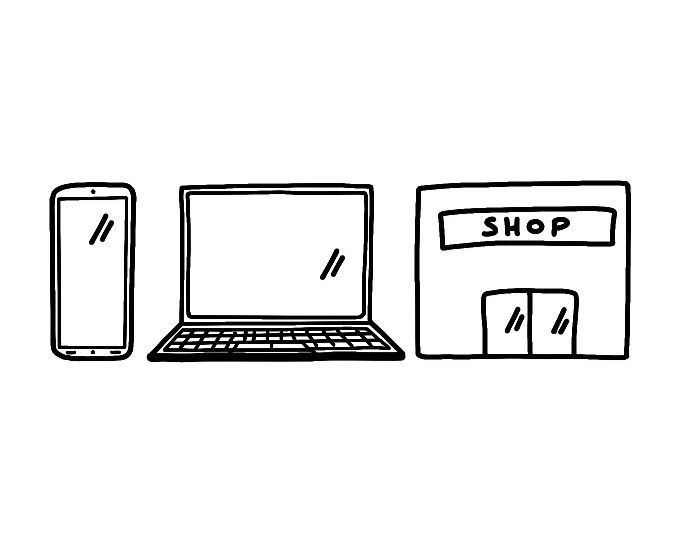Loyalty Blueprint Step 1. Build a single view of the customer
AN
The Reality of Today's Customer Journey
Picture this: You browse a product on your phone during lunch, research reviews on your laptop at home, then buy it in-store on the weekend. Sound familiar? This is the modern customer journey: fluid, multi-device, and cross-channel.
Yet most companies are still organized around channels. We have separate teams for eCommerce, stores, call centers, and marketing. Each team has its own tools, metrics, and yes, its view of the customer.
This creates a problem. While customers move seamlessly between channels, companies view them as distinct fragments: "the website visitor," "the store customer," and "the email subscriber." It's like trying to solve a puzzle with pieces scattered across different tables.

The Hidden Costs of Fragmented Data
When teams only see part of the customer story, mistakes happen:
- The Abandoned Cart Mistake: Your email team sends a "You forgot something!" message to someone who already bought the item in your store an hour later.
- The Duplication Problem: Marketing spends money acquiring "new" customers who are already loyal members shopping through different channels.
- The Service Disconnect: A customer calls support frustrated about an online order, but the agent has no visibility into their in-store purchase history or loyalty status.
These aren't just glitches. They erode trust and drain the budget.
What Is a Single Customer View?
A Single Customer View means recognizing the same person across all their interactions with your brand, regardless of how, when, or where they engage.
It's your customer's complete story in one place:
Sarah, who browses on mobile → buys in-store → calls customer service → opens the emails
All recognized as one person with one unified profile Think of it as a digital passport that follows your customer across every channel and interaction.
Why Building This Is Challenging (But Worth It)
Creating a unified customer view isn't simple because:
- People are constantly changing: New phones, browsers, email addresses, and home addresses. You're often the last to know about these changes.
- Technology keeps evolving: Privacy regulations, cookie changes, and new devices constantly shift how you can track and connect customer data.
- Channels work independently: Each team has different systems that don't naturally integrate with one another.
But here's why it matters: Data value comes from completeness, not just volume. Partial pictures lead to partial solutions.
But here's why it matters: Data value comes from completeness, not just volume. Partial pictures lead to partial solutions.
What Happens When You Get It Right? When you successfully build a single customer view, every team in your organization gets superpowers:
- Your eCommerce Team can recommend products based on what customers bought in-store, making personalization truly personal.
- Your Marketing Team can stop wasting money on customers who are already engaged and focus the budget on real acquisition opportunities.
- Your Customer Experience Team can resolve issues faster because they see the complete customer context, not just the current problem.
- Your Finance Team can calculate true customer lifetime value and profitability, helping guide better business decisions.
- Your Store Teams can recognize VIP customers and provide personalized service based on their complete purchase history.
Starting Your Single Customer View Journey
Building a unified customer view is an ongoing process, not a one-time project. Here's how to think about it:
- Start with what you have: Identify all the places customer data currently lives in your organization.
- Connect the obvious dots first: Link customers who use the same email address or phone number across channels.
- Build bridges gradually: Use loyalty programs, account creation, and customer service interactions to connect more dots over time.
- Make it valuable for customers: Give people reasons to identify themselves (exclusive offers, personalized experiences, seamless service).
- Keep improving: As technology and customer behavior evolve, so should your approach.
The Loyalty Advantage
This is where loyalty programs become strategic assets, not just marketing tactics. Great loyalty programs don't just reward behavior. They invite customers to build a relationship across channels, turning sporadic touchpoints into a connected journey.
This is where loyalty programs become strategic assets, not just marketing tactics. Great loyalty programs don't just reward behavior. They invite customers to build a relationship across channels, turning sporadic touchpoints into a connected journey.
A well-designed loyalty program gives customers compelling reasons to identify themselves consistently across all channels. It becomes the thread that connects their entire journey with your brand.
When customers see clear value in being recognized: better service, relevant offers, seamless experiences, they'll help you build that single view by willingly connecting their touchpoints.
Your Role as the Conductor
As a loyalty professional, you're uniquely positioned to orchestrate this effort. You understand customer behavior, you bridge marketing and operations, and you have access to rich customer data.
Your mission: become the single source of truth about your customers.
Your mission: become the single source of truth about your customers. When done well, you transform from a program manager into a customer intelligence hub that powers better decisions across your entire organization.
Ready to build your Single Customer View? This is just the beginning. Every organization's journey is different, but the principles remain the same: start with the customer, connect the dots, and create value for everyone.